"The more you learn, the more you earn." - Warren Buffett
Motivated by this insightful quote, I've decided to pen an article detailing my personal collection of tech books. Some were instrumental during the inception of my business, while others have provided valuable information in more recent times.
Taking a scientific perspective, regular reading actively stimulates neuroplasticity—the brain's remarkable capacity to reorganize and forge new neural connections. Delving into the ideas and concepts presented in business books has the power to reshape neural pathways, fostering cognitive flexibility and adaptability. This holds particular significance for tech entrepreneurs navigating the dynamic and ever-evolving landscape.
While I hold the belief that no book can offer a foolproof, step-by-step guide to mastering the intricacies of running a successful business—given the unique experiences and challenges each journey entails—these books serve as trusted companions and wellsprings of inspiration along the entrepreneurial path.
The Lean Startup. How Constant Innovation Creates Radically Successful Businesses by Eric Ries
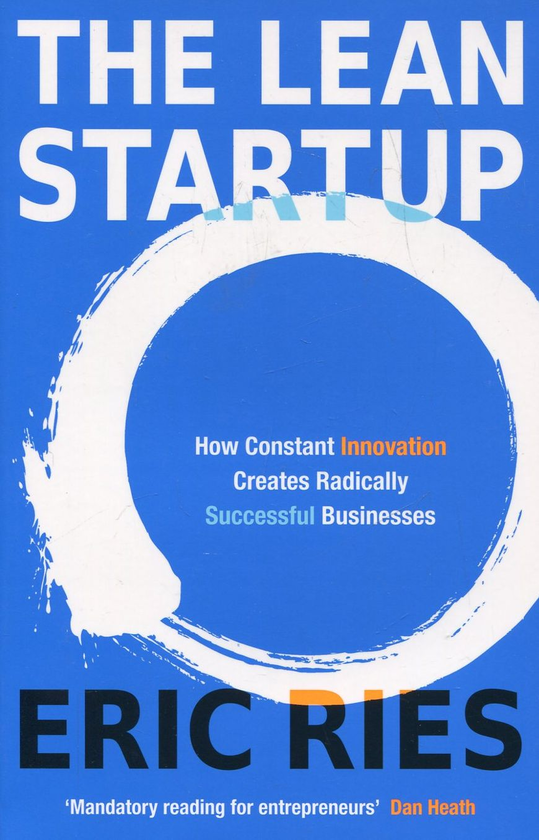
The lean startup methodology is an approach to building and launching products that emphasizes speed, flexibility, and efficiency.
When a business follows the lean startup method, it means they're all about creating a product and getting feedback from customers. Usually, they start by releasing a basic version of the product (MVP) to the market or a small group of customers. As a result, project stakeholders can validate their processes by engaging in scientific experiments and interactive product campaigns.
The lean approach is accomplished by using agile methodologies and consistently testing new versions of the prototype with the audience. This way, you not only release a product that meets the audience's needs but also steer clear of unnecessary resource expenditures.
Applicability to Tech Entrepreneurship:
Tech entrepreneurs often grapple with the challenge of developing solutions that truly address user needs. The book's focus on creating an MVP aligns perfectly with the tech industry's need to validate ideas and solutions before committing extensive resources. Furthermore, the Lean Startup methodology provides a strategic framework to optimize resource allocation. By avoiding unnecessary features and focusing on what truly matters to users, tech entrepreneurs can maximize the impact of their products within resource constraints.
Practical Tips:
1. Build-Measure-Learn
Identifying the fundamental startup process as the conversion of ideas into products, gauging customer responses, and learning from these interactions to determine whether adjustments (pivot) or persistence (persevere) are necessary.
2. Faster Time-to-Market
You don't have to wait for a lengthy 5-year timeframe to see your project fully developed. In just six months, you can swiftly enter the market, validate concepts, and if the product doesn't quite fit, make a strategic pivot. This nimble approach accelerates the development process and enables quicker responses to market dynamics.
3. Cost Efficiency
You invest in features that are crucial for the present needs, bypassing unnecessary extras. The decision to incorporate additional appealing features isn't within the scope of the MVP. The typical cost for MVP design and development on Movadex, contingent on complexity, varies between $10,000 and $50,000.
4. Agile Development:
Incorporate agile methodologies into your development processes. This enables your tech team to adapt to changing requirements, respond promptly to user feedback, and deliver updates efficiently.
Hooked. How to Build Habit-Forming Products by Nir Eyal
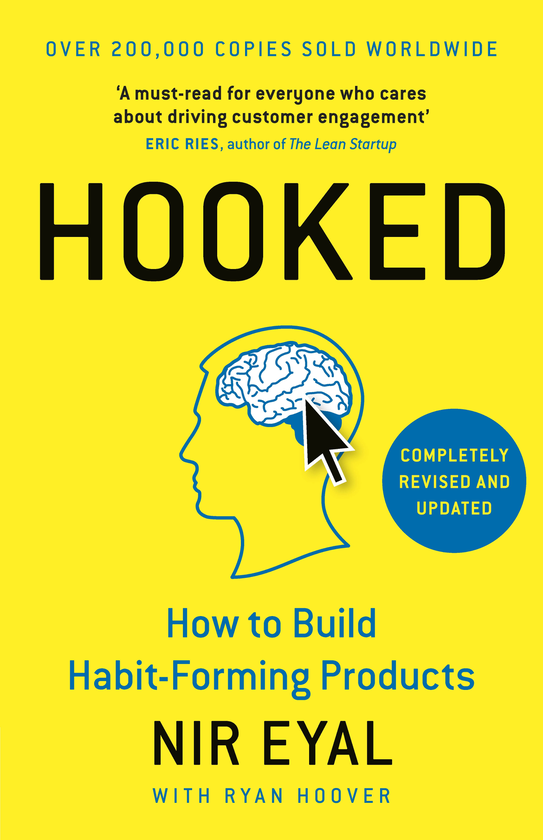
"Habits are defined as behaviors done with little or no conscious thought.”
Nir Eyal delves into the psychology and design behind habit-forming products. He argues that understanding human triggers and desires can be harnessed to create products people use regularly, not through manipulation but by addressing core human needs. Eyal introduces a four-step process for building habit-forming products: Trigger, Action, Variable Reward, and Investment. This cycle keeps users engaged by creating anticipation, rewarding them unpredictably, and encouraging them to come back for more.
By understanding what keeps us hooked, Eyal argues that we can create products that not only attract users but also genuinely enhance their lives. This makes "Hooked" relevant not just for entrepreneurs but for anyone who wants to understand how technology shapes our behavior.
Applicability to Tech Entrepreneurship:
Eyal's exploration of human triggers and desires provides tech entrepreneurs with a deep understanding of user psychology. Applying this knowledge enables the creation of products that resonate with users on a fundamental level.
Practical Tips:
-
Streamline the user experience by making actions required for engagement simple and intuitive. Minimize friction and make it easy for users to interact with your product.
-
Design your product to provide variable rewards that keep users intrigued. For example, people are more motivated by the fear of losing something than the prospect of gaining it. This is known as the loss aversion effect. In eCommerce, emphasizing limited-time offers or low stock quantities can instill a sense of urgency, encouraging users to purchase before the opportunity is gone.
For instance, Ticketmaster often emphasizes limited-time offers and low ticket availability to tap into loss aversion. They display messages like "Only 2 tickets left at this price!" to encourage users to make a purchase promptly to avoid missing out on the desired event.
Furthermore, the psychological principle known as the Goal Gradient Effect suggests that people are more motivated to complete a task as they perceive themselves as getting closer to a goal. Starbucks employs the goal gradient effect by offering rewards for frequent purchases. They have a tiered loyalty program where customers earn stars for each purchase. As customers accumulate more stars, they move closer to higher reward levels, motivating them to make additional purchases to reach the next tier.
- Foster a sense of investment by encouraging users to contribute time, effort, or data. This not only deepens their connection with the product but also makes it more challenging for them to disengage.
For instance, some tech platforms could also allow users to customize their profiles with achievements and milestones, making it a public representation of their accomplishments.
Zero to One. Notes on Start Ups, or How to Build the Future by Peter Thiel and Blake Masters
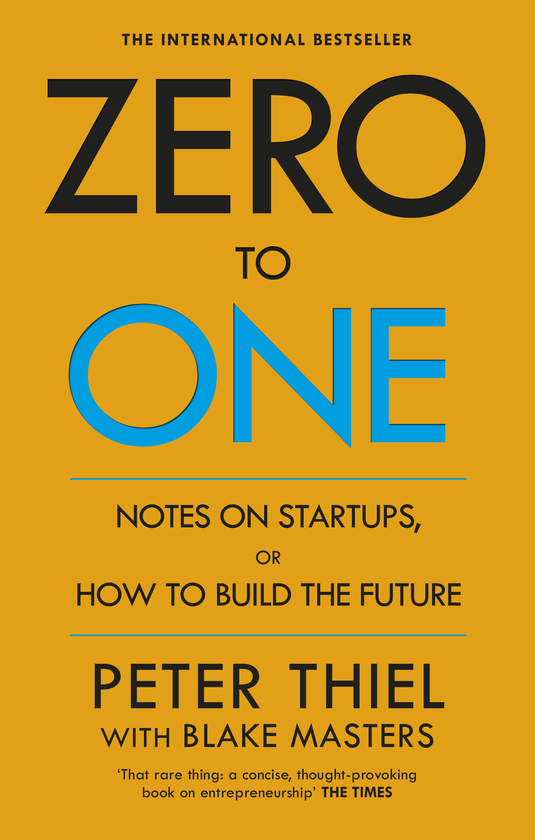
“Every moment in business happens only once. The next Bill Gates will not build an operating system.”
In "Zero to One," Thiel and Masters challenge conventional wisdom on building successful startups. They argue for creating monopolies through radical innovation – "going from zero to one" instead of copying existing businesses ("going from one to many"). The book emphasizes unique selling propositions, building strong founding teams with vision, and ignoring competition by creating new markets.
Applicability to Tech Entrepreneurship:
The book underscores the pivotal role of technology in driving progress. Tech entrepreneurs are encouraged to explore areas where technology can disrupt and revolutionize existing industries, creating opportunities for significant leaps forward.
Practical Tips:
-
Instead of competing in the market, strive to create a product or service that stands alone in its value. Forge your path with something so revolutionary, so game-changing, that it creates a world of its own. Aim for a monopoly-like presence by offering something so distinct that alternatives become irrelevant.
-
Build a tech venture with a focus on long-term sustainability rather than short-term gains.
-
Invest in advancements that can reshape industries. Stay at the forefront of technological progress to identify new possibilities for innovation. For example, at Movadex, we design and code innovative solutions for businesses, ranging from blockchain applications to airport security and passenger verification.
The Innovator's Dilemma: The Revolutionary Book That Will Change the Way You Do Business by Clayton M. Christensen
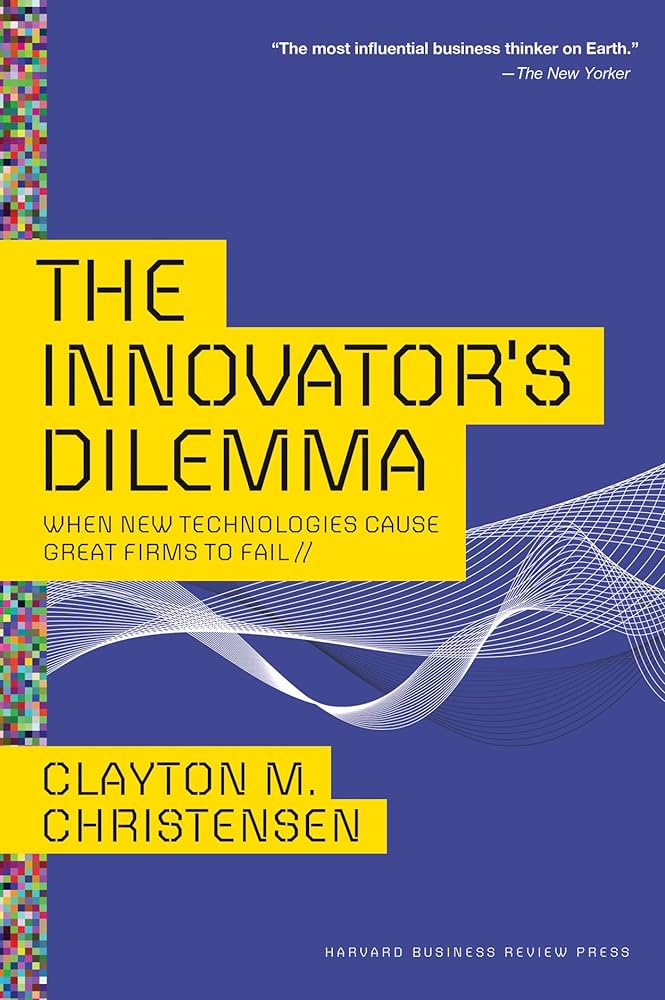
Through insightful case studies, the book examines why well-managed companies often fail to adapt to innovation, emphasizing the importance of disruptive technologies that create new markets. Christensen provides a strategic framework for businesses to navigate the tension between sustaining existing operations and fostering innovation, offering essential insights into how organizations can thrive in the face of technological disruption.
Applicability to Tech Entrepreneurship:
Tech entrepreneurs can understand when to invest in incremental improvements to current offerings and when to explore disruptive ideas that could lead to revolutionary changes.
Practical Tips:
-
Create an environment where employees feel empowered to propose and explore innovative ideas.
-
Stay vigilant about emerging technologies and industry trends. Regularly assess how these developments may impact your business and be prepared to adapt or invest in new ventures that align with technological shifts.
-
Be flexible in your business models. Don't cling rigidly to existing structures; instead, be open to evolving your business models to accommodate disruptive innovations that could reshape your industry.
Rework: Change The Way You Work Forever by Jason Fried and David Heinemeier Hansson
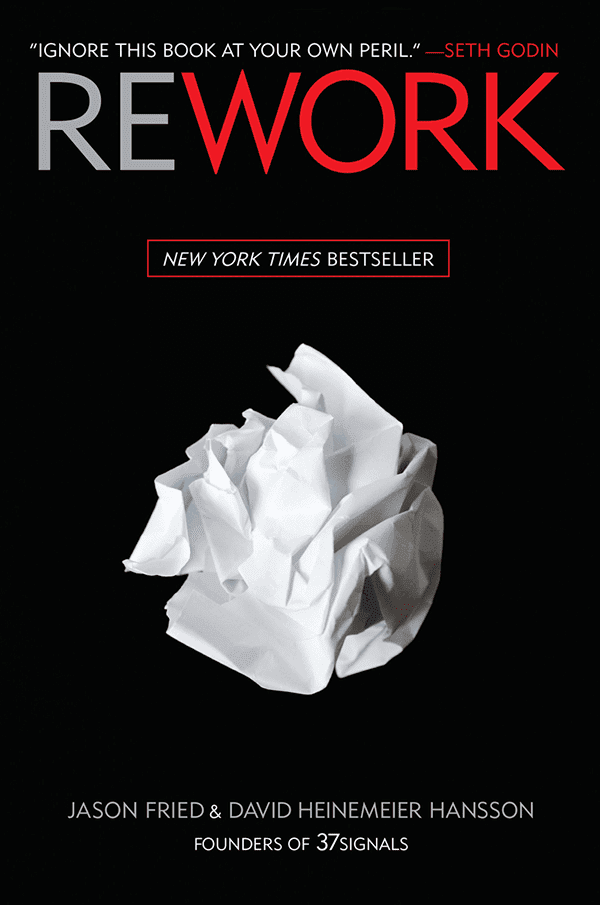
Fried and Hansson advocate for a streamlined work process, emphasizing the importance of focusing on what truly matters, cutting out unnecessary steps, and fostering a culture of innovation. They assert that anyone can start a business without working miserable 80-hour weeks or depleting their life savings.
Applicability to Tech Entrepreneurship:
"Rework" encourages tech entrepreneurs to focus on creating streamlined, user-friendly products. Prioritize features that truly add value and eliminate unnecessary complexities that can hinder innovation.
Practical Tips:
-
With the rise of remote work in the tech industry, "Rework" principles support embracing flexible work arrangements. Allow team members to work remotely when feasible, promoting a results-oriented approach over rigid work hours.
-
Shift the focus from hours worked to results achieved. Encourage a culture that values productivity and output rather than equating success solely with long work hours. This promotes a healthier work environment and sustains long-term innovation.
The Hard Thing About Hard Things: Building a Business When There Are No Easy Answers by Ben Horowitz
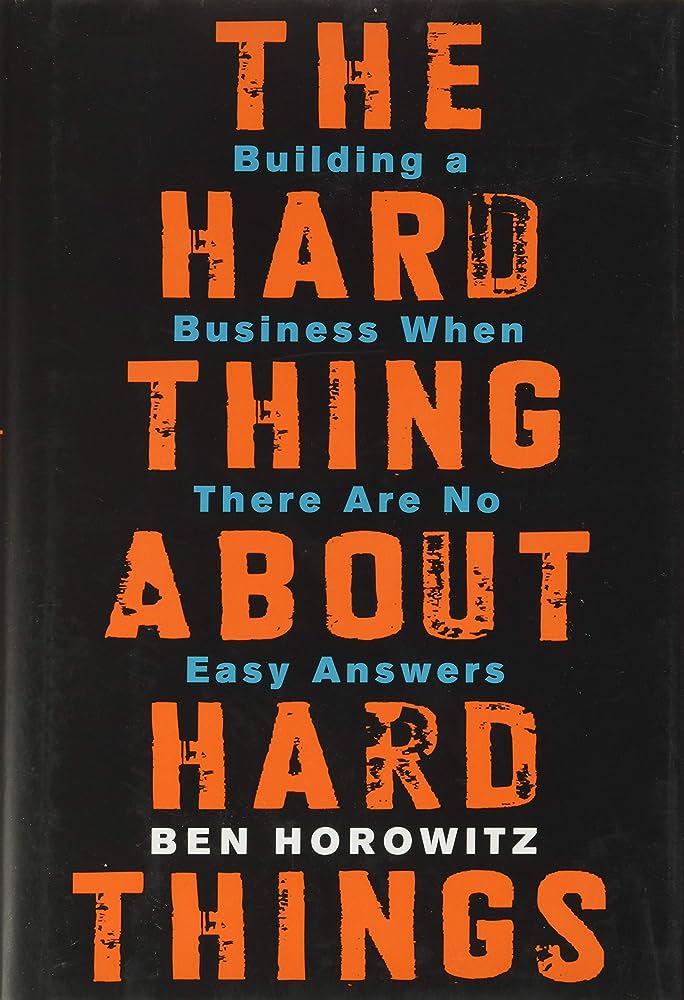
Drawing from his experiences as a successful Silicon Valley entrepreneur and investor, Horowitz provides practical insights into the often overlooked aspects of leadership and decision-making during tumultuous times. Rooted in personal anecdotes from his challenging journey, Ben Horowitz shares invaluable advice drawn from his own experiences—from co-founding the early cloud service provider Loudcloud to establishing the highly successful Andreessen Horowitz venture capital firm alongside tech luminary Marc Andreessen (renowned for creating Mosaic, the Internet's first popular web browser). Far from a glossy recount of triumphs, Horowitz candidly analyzes complex issues with no straightforward solutions, drawing from the trials he faced throughout his career.
Applicability to Tech Entrepreneurship:
Tech entrepreneurship often involves navigating uncertainty and facing unforeseen challenges. Horowitz's book equips tech entrepreneurs with a mindset to tackle the unpredictable nature of the industry.
Practical Tips:
-
Surround yourself with a strong leadership team. Horowitz emphasizes the importance of having capable leaders who can navigate challenges alongside you.
-
Prioritize open communication, transparency, and a shared commitment to the company's mission.
-
While optimism fuels innovation, a realistic assessment of challenges is necessary for effective problem-solving.
The Design Of Everyday Things by Don Norman
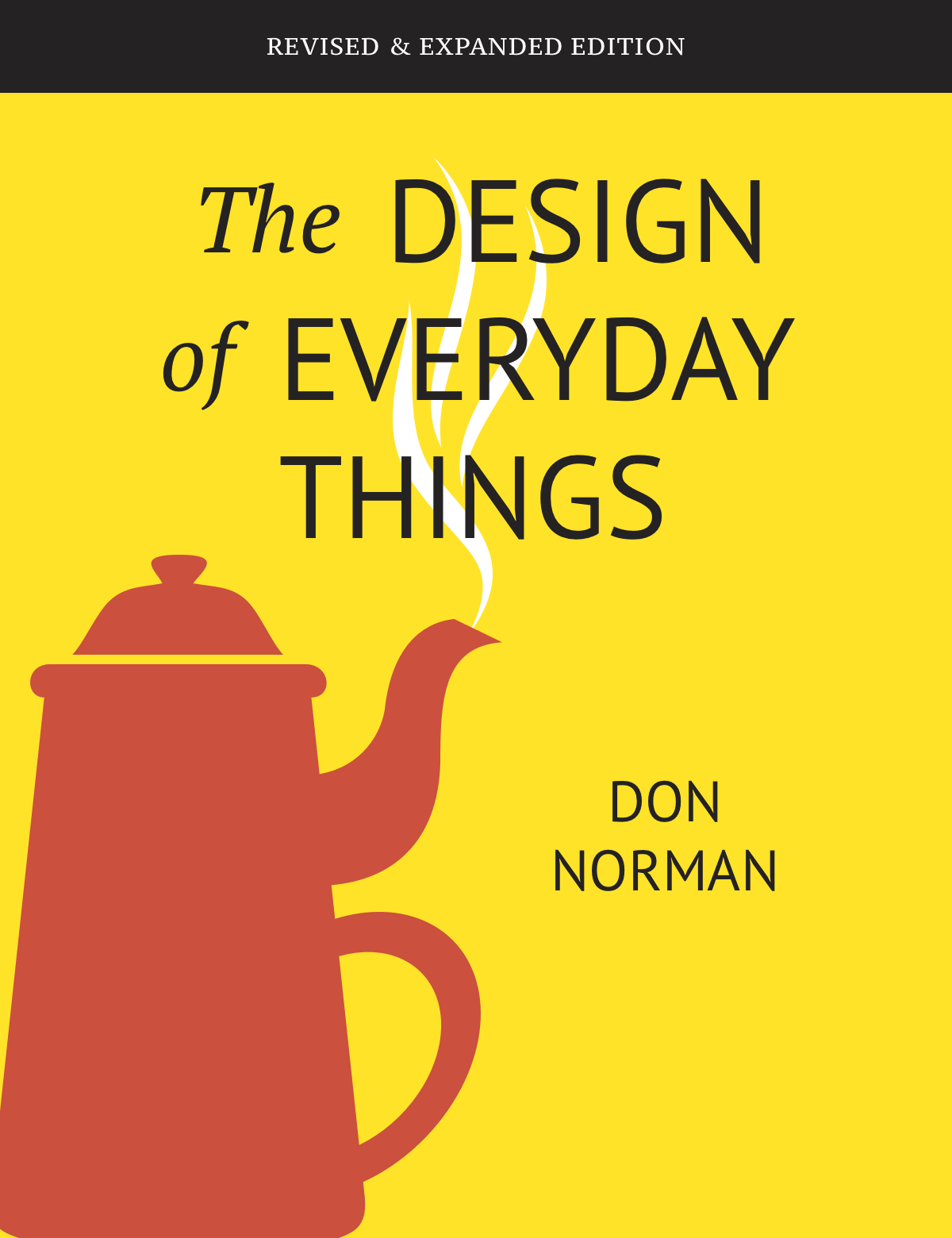
Norman delves into the psychology of everyday objects, dissecting why some designs succeed while others fail in terms of user experience. With a focus on usability and human psychology, the book introduces concepts such as affordances and signifiers to explain how design influences user behavior.
Applicability to Tech Entrepreneurship:
Norman delves into the psychology of user interaction with products. Tech entrepreneurs can benefit by understanding user behavior, preferences, and expectations.
Practical Tips:
-
Regularly conduct user testing throughout the development process. Gather feedback from real users to identify pain points, discover usability issues, and refine the product iteratively.
-
Stay open to learning and adapting based on user feedback. The tech industry evolves rapidly, and a commitment to continuous improvement ensures that products remain relevant and user-friendly over time.
Startupland: How Three Guys Risked Everything to Turn an Idea into a Global Business by Mikkel Svane
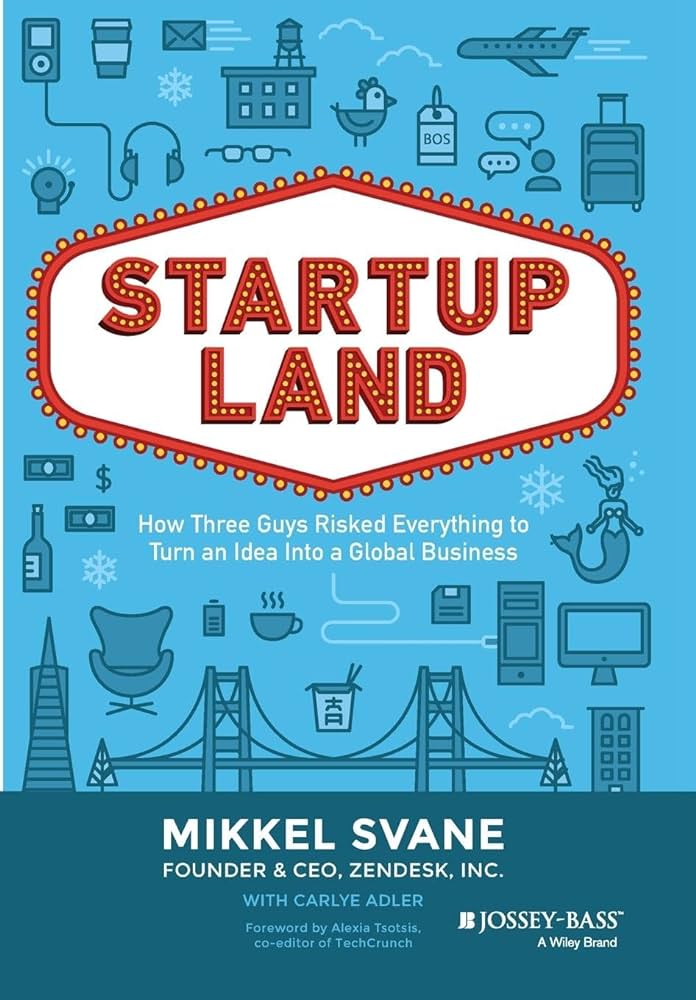
The book tells a compelling narrative of the entrepreneurial journey behind Zendesk, a global customer service software company. Svane, along with his co-founders, shares the highs and lows, challenges, and triumphs of building a startup from the ground up. The book provides a candid look into the world of entrepreneurship, addressing pivotal moments, strategic decisions, and the resilience required to transform an idea into a successful global business.
Applicability to Tech Entrepreneurship:
Tech entrepreneurs can draw inspiration to embrace calculated risks while cultivating resilience to navigate the uncertainties that come with building a global business. Furthermore, the book highlights the significance of a customer-centric mindset in Zendesk's journey.
Practical Tips:
-
Clearly define your startup's vision and mission. Ensure that your team shares a collective understanding and commitment to the overarching goals, fostering alignment and purpose.
-
Be adaptable and embrace a culture of continuous learning. Tech entrepreneurs should stay agile, ready to pivot when needed and commit to ongoing improvement through learning from challenges and successes.
-
Actively seek and incorporate customer feedback into product development. Create mechanisms for continuous feedback loops to enhance your product's relevance and usability.
Blitzscaling: The Lightning-Fast Path to Building Massively Valuable Companies by Reid Hoffman and Chris Yeh
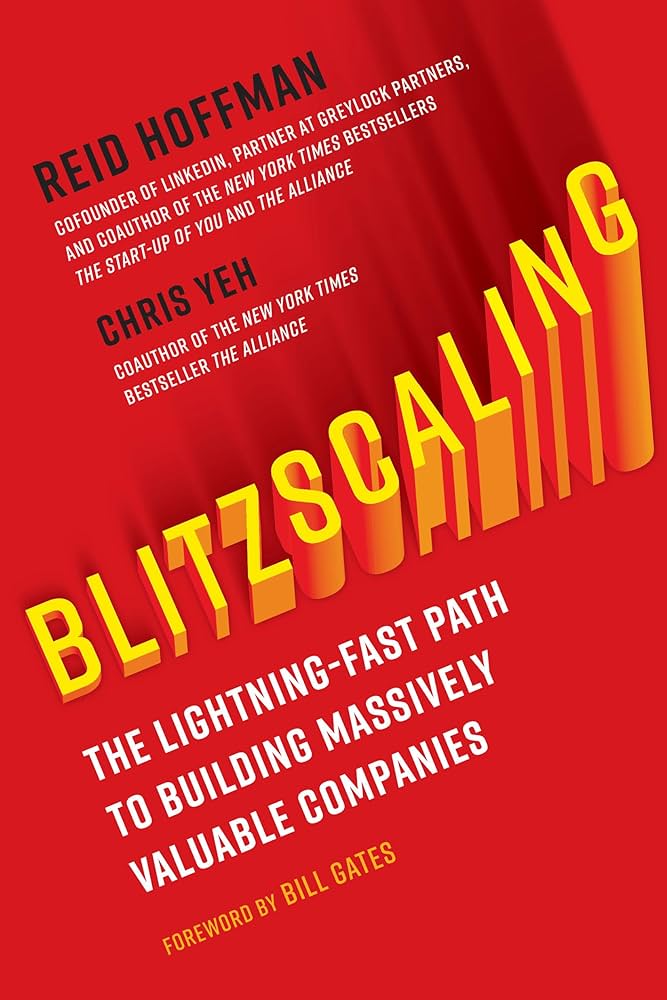
Drawing on experiences from successful tech companies like LinkedIn and PayPal, the authors provide insights into the challenges and opportunities associated with scaling at an accelerated pace. The book delves into the key principles of blitzscaling, emphasizing the need for bold decision-making, adapting to uncertainty, and prioritizing growth over perfection.
Applicability to Tech Entrepreneurship:
In the tech world, timing is crucial. Entrepreneurs should prioritize speed over efficiency during the early stages to quickly establish market dominance. The book advocates for taking bold risks and making fast decisions to outpace competitors.
Practical Tips:
- Plan for scalable infrastructure from the outset. Ensure that your tech stack and operational processes can handle rapid growth without compromising performance or user experience.
- Prioritize user feedback and iterate on your product accordingly.
- Secure funding strategically to support rapid growth. Entrepreneurs should seek investors who understand and support the blitzscaling approach.
Conclusion
The order in which you read these books is entirely your choice. For those starting their MVP, I recommend beginning with 'The Lean Startup' by Eric Ries. Many new startups with investor backing are built upon the principles outlined in this book. Afterward, feel free to explore the other books on this list in any sequence.
If you're contemplating launching your startup or seeking a software design and development partner, don't hesitate to reach out to us. You can schedule a complimentary introductory call to discuss your business ideas and requirements by visiting https://bit.ly/3DbrYlt or emailing me at salome@movadex.com. Choose the option that best suits your needs, and be assured that we never pressure our customers. We maintain a transparent and personalized approach throughout the decision-making process.




